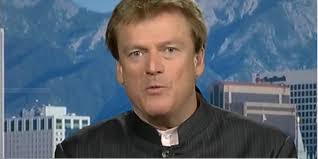The Congressional Research Service is a Library of Congress think-tank with just one client: Congress. A member of Congress requests a study on a subject of interest, and CRS researchers generate it. The CRS is one of the most respected institutions in Washington, DC, and its output is universally considered non-partisan, objective, and thorough.
Last Tuesday, February 24, 2009, the Congressional Research Service published a 40 page report, “Who Regulates Whom? An Overview of U.S. Financial Supervision” (Mark Jickling, Edward Murphy, CRS, February 24, 2009) As the title suggests, the report is a primer on the parts of the US financial system, and who regulates which part. As the Summary section puts it:
“This report provides an overview of current U.S. financial regulation: which agencies are responsible for which institutions and markets, and what kinds of authority they have….This report does not attempt to analyze the strengths and weaknesses of the U.S. regulatory system. Rather, it provides a description of the current system, to aid in the evaluation of reform proposals.” (Page 2)
And in the Introduction:
“A number of studies and reports have already proposed broad changes to the division of supervisory authority among the various federal agencies and in the tools and authorities available to individual regulators. This report provides a basis for evaluating and comparing such proposals by setting out the basic structure of federal financial regulation as it stood at the beginning of the 111th Congress.” (Page 5)
And describe the basic structure of the the financial system, its regulators, and their regulatory principles, it does, thoroughly, in 35 more pages of clear and informative, if not exactly gripping, prose. It covers US banking regulation and federal securities regulation, the regulation of derivative trading and of GSE’s such as Freddie Mac and Fannie Mae, and the non-regulation of foreign exchange and US Treasuries, nonbank lenders, hedge funds and venture capitalists. I confess it answered every question I could think to ask regarding the parts of the US financial system and which office of government regulates each part. I commend Messiers Jickling and Murphy for so thorough and well-organized a review of that subject.
There’s just one thing: it does not mention the Depository Trust and Clearing Corporation. In fact, it does not mention securities settlement.
Does that seem strange?
Consider this: The regulatory structure of the US capital market was set in the Secuties Exchange Act of 1934. It devoted a section (immediately after the section on Directors, Officers, and Principle Shareholders, and the section establishing the need to keep records), to describing the need for a “National System for Clearance and Settlement of Securities Transactions” (Section 17a). Its opening is instructive:
“a. Congressional findings; facilitating establishment of system
“1. The Congress finds that–
“A. The prompt and accurate clearance and settlement of securities transactions, including the transfer of record ownership and the safeguarding of securities and funds related thereto, are necessary for the protection of investors and persons facilitating transactions by and acting on behalf of investors.
“B. Inefficient procedures for clearance and settlement impose unnecessary costs on investors and persons facilitating transactions by and acting on behalf of investors.
“C. New data processing and communications techniques create the opportunity for more efficient, effective, and safe procedures for clearance and settlement.
“D. The linking of all clearance and settlement facilities and the development of uniform standards and procedures for clearance and settlement will reduce unnecessary costs and increase the protection of investors and persons facilitating transactions by and acting on behalf of investors.”
It seems that in 1934 Congress thought having securities transactions clear and settle promptly was pretty important.
Which makes it especially odd that in 2009, in the Congressional Research Service’s admirably thorough report on the parts of the US financial system and the regulators who oversee them, no mention is made of that “”National System for Clearance and Settlement of Securities Transactions” whose establishment Congress in 1934 found “necessary for the protection of investors.”
I am reminded of an event from early 2005. It was the early days of the Mitzvah. I was having trouble synthesizing the data. It would be more honest of me to say: the data suggested that our settlement system was Swiss Cheese, an enormous derivative risk was building up that no one understood, the same SEC to which I had spent a lifetime looking up in awe and fear was actually lapdog to a tight circle of Wall Street crooks, the savings of America were being looted, and it was all going to end in systemic collapse. But clearly, I thought, that’s crazy. So I was having trouble forming a hypothesis to fit the data, other than a crazy one.
I decided to find out who regulated the DTCC. Listen to what they had to say. No doubt I’d learn some piece of the puzzle that I was missing, something that would cause the light bulb to go on and me to say, “Oh, that’s where this is coming from. Oh, I see, there’s nothing to worry about after all.”
The problem was, I could not find out who regulated the DTCC. It was not on their website. I couldn’t find any government agency that claimed to regulate the DTCC, or any news story that mentioned the subject of DTCC regulation. A core finding of Congress in 1934, in the foundational document of modern regulation, established that something had to be done, but 71 years later I could find no evidence that it was the job of anyone in the federal government to do it. And that’s odd because usually government agencies fight turf wars over who gets to regulate this or that. But here was a great vital section of the Securities Exchange Act of 1934, authorizing the establishment of a crucial component of the system, yet no one seemed to be doing it.
That can’t be right, I thought. Clearly just another moment of bad craziness.
So I went to see two securities lawyers whom I knew socially. I asked them if they would research something for me, that I would be willing to pay them for their time, and that they did not have to worry about writing anything formal. I just needed from them one simple sentence of the form, “The DTCC is regulated by _____ .” They agreed to produce it.
A week later I went to visit them. For some time they sat hemming and hawing and scratching their heads, until finally they told me: “We can’t seem to find anything that establishes who regulates the DTCC, or even if it is regulated. We found one mention of the subject, in a footnote in a GAO report from a couple years ago. They say they think the SEC regulates the DTCC, but they don’t sound very sure.”
From the looks of it, neither is the Congressional Research Service.
If this article concerns you, and you wish to help, then:
1) email it to a dozen friends;
2) go here for additional suggestions: “So You Say You Want a Revolution?“








It’s regulated by organized crime.
Don’t laugh!
This issue of unregulated, private institutions having control over an untold amount of power to a public entity threatens the integrity of the markets in full. Along with HR 1207 (http://www.opencongress.org/bill/111-h1207/show) this idea should be introduced before congress for the appropriate transparency President Obama claimed to establish.
Patrick, the outline of an idea (take it for what it’s worth)…I have no email address directly to you so here it is…hoping you will see this.
***************************************************
RAIL – Real American Investors League
I propose a not-for-profit organization/movement called RAILS. (aside: Couldn’t ANY group for investors be considered ‘non-profit’ these days?)
This organization would serve as spearhead and aegis for concerns of INVESTORS, not TRADERS. We need positive PR to counteract the Chanos/Einhorns of the world.
Who are RAIL investors?
pensioners, etc.
What we are not…
Hedgefunds
Daytraders
Ways and Means, Tools at our disposal:
A Platform:
Build A platform (what we demand in no particular order):
– immediate and complete short ban
– uptick rule – modified to take into account percentage increase over a time period – not geared to a penny as many
disingenuous folks have suggested is the only way to accomplish this.
– Shorting (naked) and otherwise immediately public
– Puts must be married. If you have no long share, you may have no put.
– SKF must be terminated
– CDS must be invalidated if no ‘investable interest’
– DTCC reconciliation of FTD within 30 days
– News rumors CNBC – nationalization etc squelched. No yelling ‘Fire’ in a crowded theater, or in Yahoo message Boards for
that matter…
– FUD regarding accounting of companies to stop
– Legislators to reveal ALL investment holdings right now, short, long and otherwise.
– Analysis of the origin of the shorting, naked and otherwise – who, what countries, when
– CRIMINAL Charges and sentencing in cases like Madoff. ALL ASSETS confiscated. Complete investigation into his family, and
the Family (mob) at the heart of this.
METHODS:
– Need a ‘Million Investor’ march on Washington – NYC?
– News coverage
Lawsuits against senators, NYSE, SEC, etc.
This is merely a germ of an idea. What do you think?
************************************
This is a MUST WATCH video for all!!CNBC has been taken down again, this time by Jon Stewart of the Daily show”
http://www.thedailyshow.com/video/index.jhtml?videoId=220252&title=cnbc-gives-financial-advice
Sean this is much deeper than a REBUKE of CNBC. Find me the one who is in charge who has the power and it’s up to HE/SHE to implement existing rules. We know the LAW. The problem ISN’T the law. We don’t need more agents. We don’t need more senators or congressman. We don’t need more SEC commissioners. We just need those in position to do their jobs. And if not. REMOVE THEM. The problem as most should now understand is COMPLICITY. And as one poster has suggested there are ways to take back our system and while doing so restructure it. The problem though will be; Who remembers the transfer of power during the Castro days. GOOD GUY GONE BAD?.OR ALWAYS a BAD GUY WHO achieved power?
Jim..Great thoughts and now all we need is someone with the stroke and contacts to champion.
We need to coalesce.
If all the media sees is smucks like Einhorn, how do we stand a chance?
We need a face and a voice and capital.
We are the MAJORITY!
Patrick’s message has the great advantage of being simple and easy to understand. It should have no problem getting support from a large number of people if communicated broadly. (1) The 1934 law requires regulation of clearing/settlement. (2) The recent comprehensive report dies not mention any such regulation. Everyone should be screaming “WHY WHY WHY” Get this issue in front of congress/senate!!
Jim Hall:
Please join an already existing non profit corporation, the National Investor Protection Coalition. It’s free, though fell free to donate if you feel so inclined.
The more members we have, the better. I’m working on several fronts on this issue.
http://investorprotectioncoalition.org/
all I want to say . I am deeply ashamed as a citizen of the usa.. to see what is going on in the market and in Washington , no one has been watching the store for us for a very long time, how we got in to this financial mess is easy to see , the Mob has been running it and the department that should protect the investor have been sleeping, very ,very sad indeed ,
tommytoyz, thanks.
I’ll take a look.
Seems we need a charismatic spokesperson for any such effort, no?
http://www.dtcc.com/about/business/customers.php
What the DTCC says about regulation on its web site, at the bottom of the page.
However, from this, I take it that the DTCC is an SRO. I.e., it regulates itself. Now I understand…
And you will note from the Wayback Machine that the page to which you refer went live in 2007:
http://web.archive.org/web/*/http://www.dtcc.com/about/business/customers.php